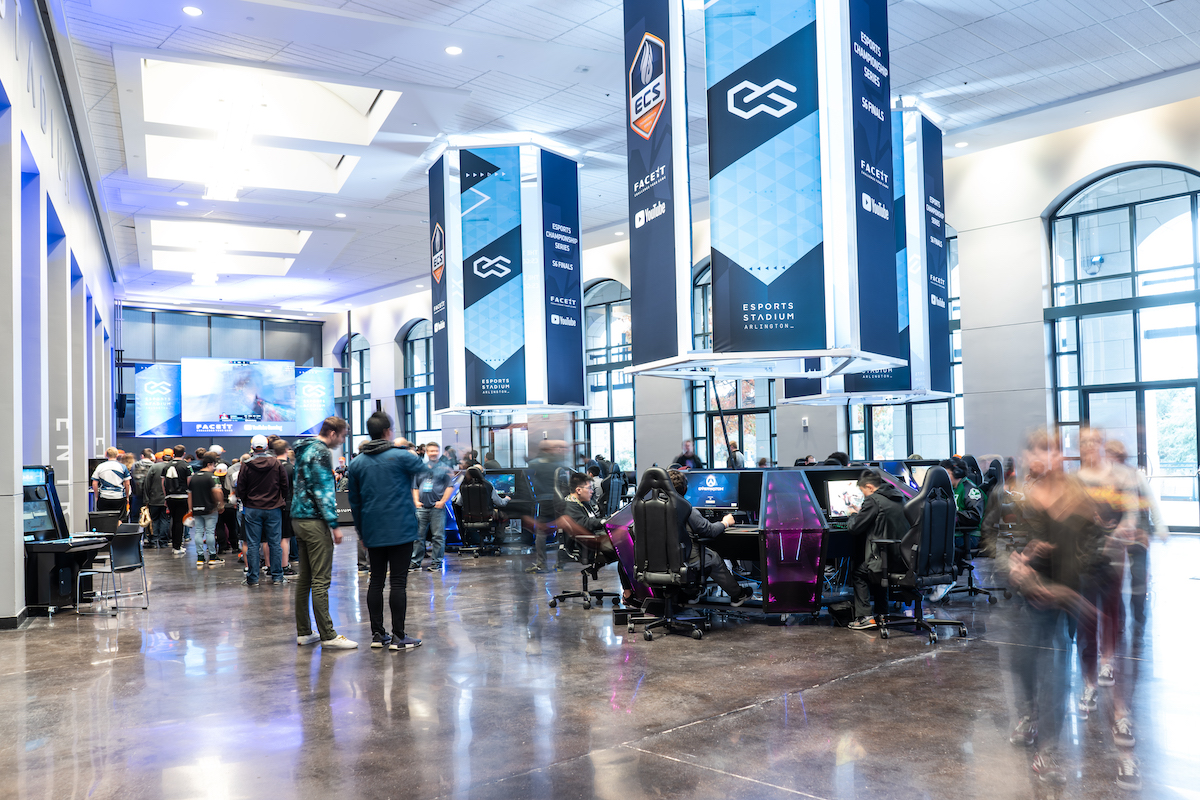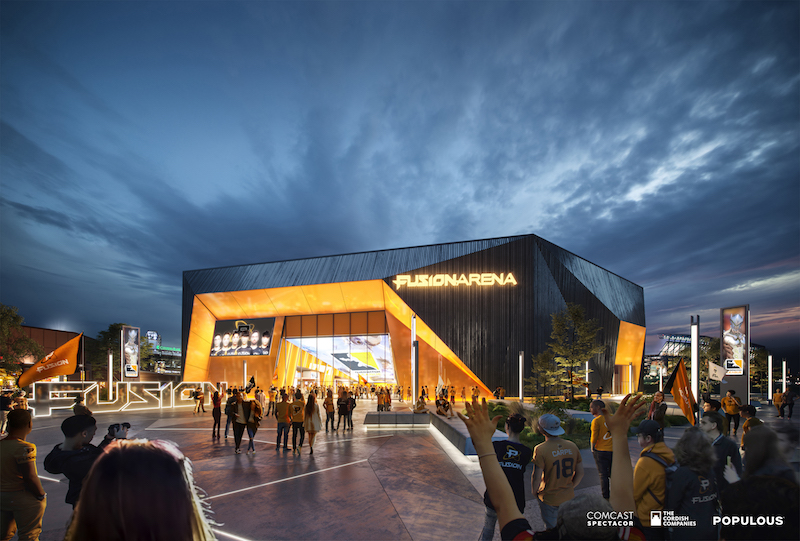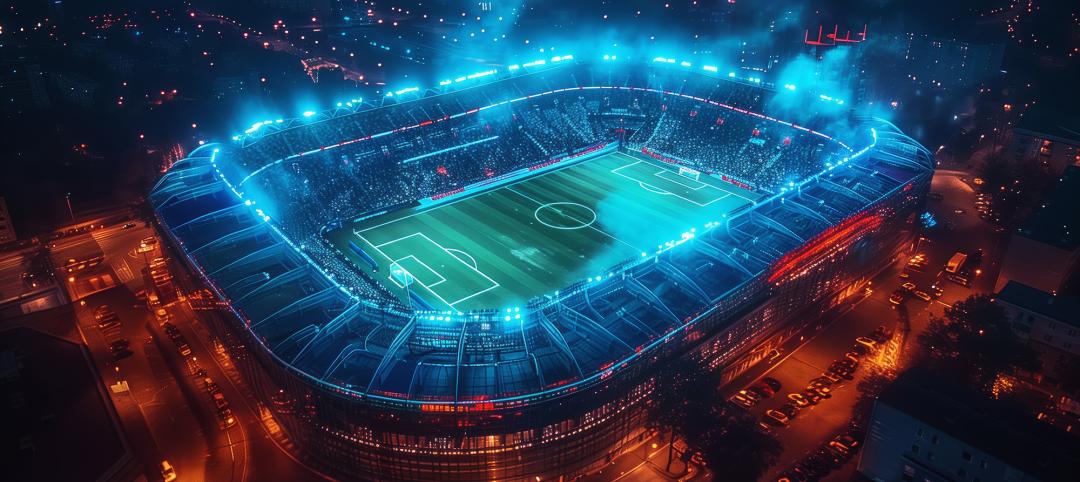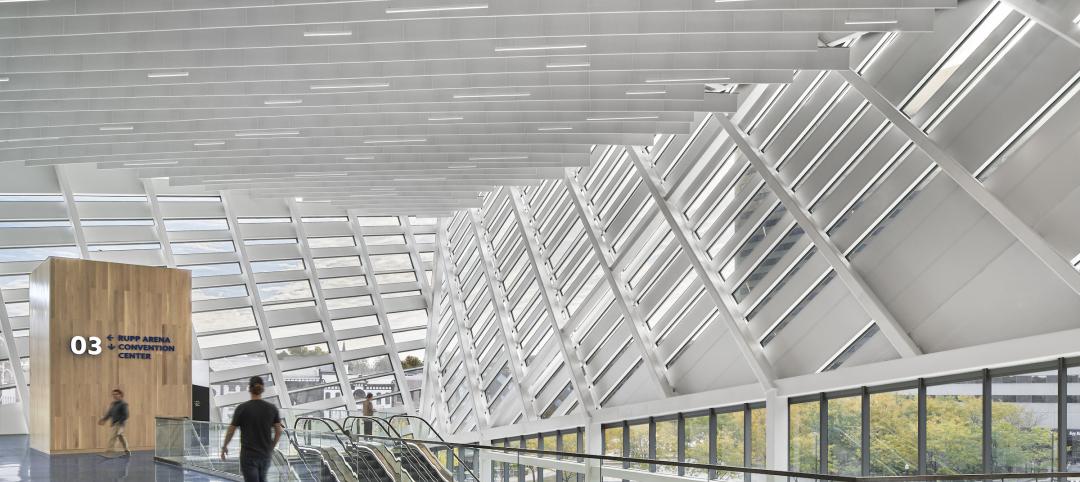Once upon a time, going to a sporting event meant heading to the stadium and taking a seat on a hard wooden or metal bench to enjoy nine innings, four quarters, or 48 minutes of action. But in today’s HD 4K world, where watching a game in standard definition is akin to smearing petroleum jelly over both eyes, the modern day sports stadium required its own “high definition” upgrade to keep fans engaged.
While the more traditional sports venues (think ballparks and football stadiums) are all becoming the center pieces of their own entertainment districts, a new type of stadium is completely changing the rules of what constitutes a sports venue: the eSports stadium.
Unless you are a fist-shaking, yell-at-those-darn-kids-to-get-off-your-lawn Luddite, odds are you’ve already heard of eSports and are aware of their skyward trajectory. A large part of this growth trajectory includes the evolution of eSports stadiums, which have quickly gone from concepts, to repurposed, renovated spaces, and now, to purpose built stadiums bursting at the seams with technology.
Take the work Populous has done in the eSports realm, for example. Last November, the firm completed work on the largest eSports facility in North America with eSports Stadium Arlington. Working with Shawmut Design and Construction, eSports Stadium Arlington was a $10 million-renovation project that used 100,000 sf of the city’s old convention center to create a highly adaptable venue that can host events with audiences ranging from 250 people to 2,500 people.
Retrofits can only take eSports so far
For a sport growing as fast as eSports, retrofitting old convention centers is only viable for so long. After all, you don’t see NFL or MLB teams trying to carve out space from an old warehouse or convention center for their new stadiums, do you? This means you’re about to see more purpose-built eSports stadiums, as well. The Populous-designed Fusion Arena will be the first purpose-built eSports arena in the Western Hemisphere upon its completion in 2021. The $40 million-facility is located in the Philadelphia Sports Complex surrounded by the Wells Fargo Center, Lincoln Financial Field, and Citizens Bank Park. It will seat approximately 3,500 people and include a training facility, a broadcast studio, team offices, and myriad seating options. As revenue from the global eSports economy is set to surpass $1 billion for the first time in 2019, Fusion Arena may be the first purpose-built arena in the Western Hemisphere, but it certainly won’t be the last.

HOK and software company SAP recently released a white paper titled “Developing the Esports Arenas of the Future” in which they speak to the importance of the purpose-built venue in helping eSports’ continued growth. “As more purpose-built venues are constructed for eSports, there are significant opportunities for architects to shape the future of this industry,” the white paper’s authors write.
RELATED CONTENT
- Top 90 Sports Facilities Architecture Firms
- Top 65 Sports Facilities Engineering Firms
- Top 60 Sports Facilities Construction Firms
These arenas of the future will better integrate the experiences of tiered seating areas with the concourse spaces in order to allow fans to follow the action on the main stage while also engaging in auxiliary activities. This means a new type of seating bowl is not only beneficial, but necessary to the success of these stadiums. Additionally, as eSports events can vary greatly in the number of spectators in attendance and players on stage, adaptability is key. Stages, seating, and digital screens must all be able to seamlessly change and adapt to numerous events, big or small.
Digital and physical spaces become one in eSports arenas
Perhaps the most important component for eSports stadiums, and an area where they differ greatly from other sports venues, is the extent technology needs to be integrated into the fan experience. Digital experiences and physical spaces will be combined to create a completely new experience. In the future we will see seats equipped with USB ports, virtual reality and mixed reality capabilities throughout, and the ability for a digital avatar to exist within the physical seating bowl. “The ability to recreate the arena virtually through virtual- or augmented-reality experiences will also be key.” the report’s authors write, “with venues creating digital replicas or ‘digital twins’ of eSports arenas.”
As eSports, and the revenue they generate, grows, not only will these stadiums continue to be honed for the specific purpose of hosting eSports events and drawing fans away from a purely streamed experience, but they will also become hotbeds for exploring new ways technology can be leveraged in a stadium (be it NFL, MLB, NBA, or eSports) setting.
Related Stories
Sports and Recreational Facilities | Jul 15, 2024
Smart stadiums: The future of sports and entertainment venues
These digitally-enhanced and connected spaces are designed to revolutionize the fan experience, enhance safety, and optimize operational efficiency, according to SSR's Will Maxwell, Smart Building Consultant.
Giants 400 | Oct 17, 2023
Top 70 Sports Facility Construction Firms for 2023
AECOM, Turner Construction, Clark Group, Mortenson head BD+C's ranking of the nation's largest sports facility contractors and construction management (CM) firms for 2023, as reported in Building Design+Construction's 2023 Giants 400 Report.
Giants 400 | Oct 17, 2023
Top 130 Sports Facility Architecture Firms for 2023
Populous, Gensler, HOK, and HKS head BD+C's ranking of the nation's largest sports facility architecture and architecture/engineering (AE) firms for 2023, as reported in Building Design+Construction's 2023 Giants 400 Report.
Esports Arenas | Oct 10, 2023
Modular esports arena attracts more than gamers
As the esports market continues to grow to unprecedented numbers, more facilities are being developed by universities and real estate firms each year.
Giants 400 | Aug 22, 2023
Top 115 Architecture Engineering Firms for 2023
Stantec, HDR, Page, HOK, and Arcadis North America top the rankings of the nation's largest architecture engineering (AE) firms for nonresidential building and multifamily housing work, as reported in Building Design+Construction's 2023 Giants 400 Report.
Giants 400 | Aug 22, 2023
2023 Giants 400 Report: Ranking the nation's largest architecture, engineering, and construction firms
A record 552 AEC firms submitted data for BD+C's 2023 Giants 400 Report. The final report includes 137 rankings across 25 building sectors and specialty categories.
Giants 400 | Aug 22, 2023
Top 175 Architecture Firms for 2023
Gensler, HKS, Perkins&Will, Corgan, and Perkins Eastman top the rankings of the nation's largest architecture firms for nonresidential building and multifamily housing work, as reported in Building Design+Construction's 2023 Giants 400 Report.
Architects | Jun 6, 2023
Taking storytelling to a new level in building design, with Gensler's Bob Weis and Andy Cohen
Bob Weis, formerly the head of Disney Imagineering, was recently hired by Gensler as its Global Immersive Experience Design Leader. He joins the firm's co-CEO Andy Cohen to discuss how Gensler will focus on storytelling to connect people to its projects.
Arenas | Feb 23, 2023
Using data to design the sports venue of the future
Former video game developer Abe Stein and HOK's Bill Johnson discuss how to use data to design stadiums and arenas that keep fans engaged and eager to return.
Esports Arenas | Jan 16, 2023
Columbus, Ohio, to be new home for 100,000-sf esports arena
Up-and-coming esports stadium company Glytch has announced its plan to build a versatile esports arena in Columbus, Ohio.

















